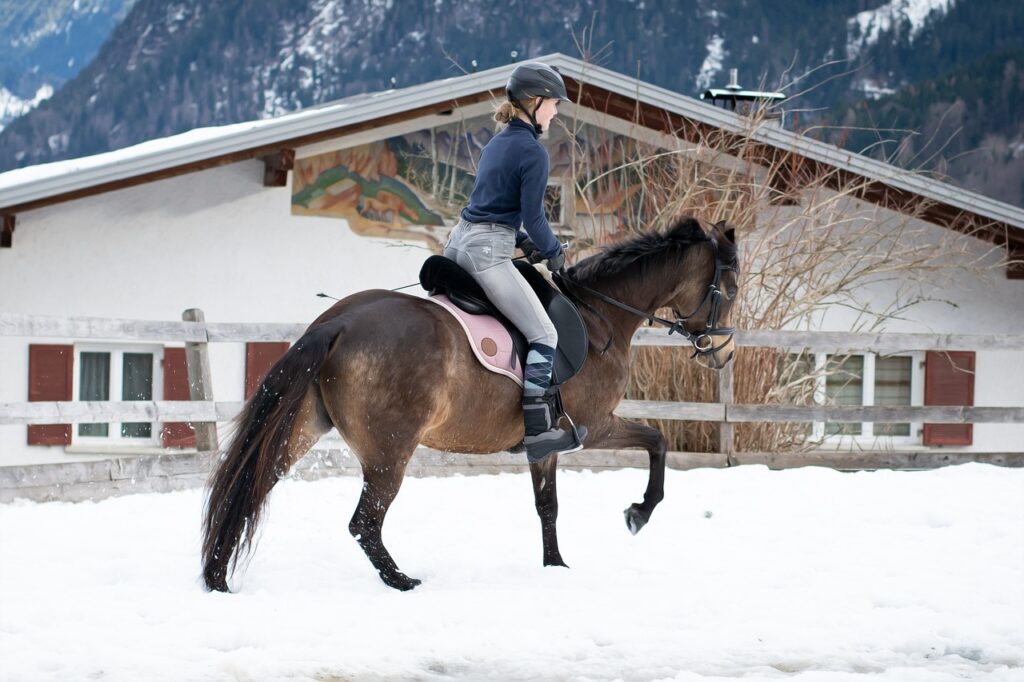
We all have to agree that the 2023-24 winter season has been pretty darn mild, SO
FAR! However, the weatherman predicted some pretty substantial snow the second
half of February into March. So, how cold is too cold to ride?
The horse’s respiratory tract is designed to warm and humidify air by the time air
reaches the lungs. Intense exercise (anything more than a walk) speeds up and
deepens breaths so that air is not as warm or humid when it reaches the lungs which
can cause damage to the lower respiratory tracts. It has been discovered in multiple
studies that respiratory tracts in horses can become damaged by breathing cold air
starting around 23 degrees Fahrenheit, damage to lower respiratory tracts was found 48
hours after exercise, including elevated white blood cell counts and inflammatory
proteins as well as narrowing of the tracts.
The cardiovascular system react to cold by increasing the blood pressure and heart
rate. It also reduces the amount of blood that flows closest to the skin in order to
preserve core body temperature. The reduced blood flow to the skin can lead to
frostbite. This lack of blood leads to the eventual freezing and death of skin tissue in
the affected areas. It is probably wise to reduce the intensity of your ride so that your
horse’s heart does not have to work so hard.
Muscles take longer to warm up in the cold weather and arthritic joints may ache and
need more time to loosen up. During exercise in the cold, your horse’s muscles require
more energy at a faster rate in order for them to function as they would under less
extreme conditions. The cold temperature effects the temperature of your horse’s
muscles greatly affecting the muscles’ ability to contract. This can leave muscles more
vulnerable to fatigue and strains, as cold muscles are less elastic and don’t absorb
shock or impact as well as warm muscles. Cold muscles are also less responsive to
signals from the nervous system so movements are less coordinated.
Therefore, it is best to avoid exercise (trotting, loping and jumping) when temperatures
are under 20 degrees F, stick with walking and make sure to properly cool your horse
down.
Information gathered from the Horse Health Newsletter